Upcycling is the craze of the town, and DIY is the rave! You don’t want to be left out, right? So, jump right in and see why it is the happening vibe everywhere.
Some DIY Tips To Modernize Your Home With Leftover Waste Materials Are:
- Egg Carton Seed Starters
- Convert Old Utensils Into Planters
- Stacked Wooden Crate Shelves
- Newspaper Upcycling
- Egg Crate Organizers
- Scrap Fabric To Patchwork
- Wine Cork ArtWork
- Plastic Bottle Reuse
- Sock Makeover
- Denim Recreation
- Repurpose Cardboard
- Rehash Mason Jars
Try these DIY projects and make a thrifty deal turning your rubbish into eco-friendly home products that you can productively use and exhibit.
Let’s roll down our sleeves and get started!
1. Egg Carton Seed Planter:
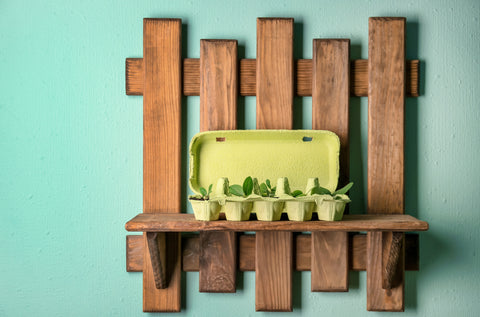
Photo by belchonock on depositphotos
Egg cartons are things that we usually throw away without thinking twice. You can score off seed starters from your gardening supplies shopping list and replace them with these instead.
This simple DIY is a no-brainer. Fill your empty egg box with potting mix and add a few seeds into each crate. Gently spray water using a spray water can. Watch and enjoy the emerging baby plants! Life is truly a miracle.
Once the seedlings grow 3-4 true leaves, it’s time to transplant. Cut separate each groove of the egg carton and plant them into garden soil – without disturbing the roots, of course! The paper in the egg carton will decompose right into the ground. Cool, yeah!
2. Convert Old Utensils Into Planters:
Give new life to your old pots, pans, cups, mugs, glasses, bowls, and other kitchen utensils by filling them with potting mix and planting succulents and other plants.
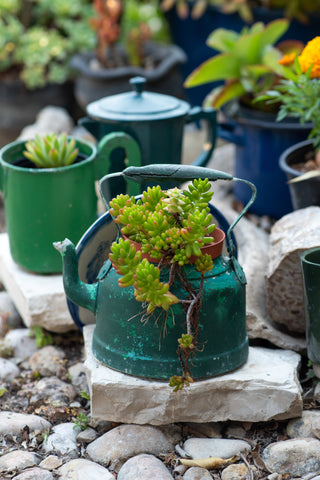
Photo by InnaReznik on depositphotos
This vintage kettle has found a new purpose and life by housing this ornamental succulent plant.
Old metal or plastic buckets, bottles, and other household items can be perfect indoor planters for succulents and cacti requiring very little rootage. Paint them in gorgeous colors and exhibit them for an exotic look. Or choose to stay original and display their raw beauty.
3. Stacked Wooden Crate Shelves:
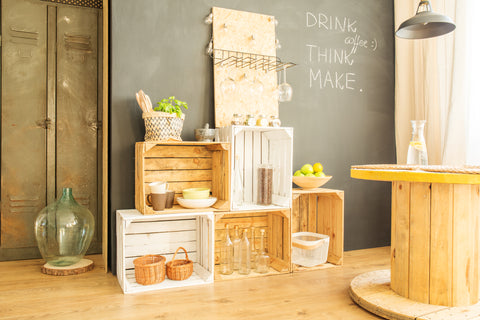
Photo by photographee.eu on depositphotos
Are you crammed for storage space in your rented apartment? Try this renter-friendly DIY that is super easy to make.
Add shelves to your living area, kitchen, library, or kid’s room by stacking wooden crates – either vertically or horizontally.
Use both long and short screws to secure the shelves so they hold well together.
Spray paint with white or with a color that matches your room decor, or stain the wood.
These rustic shelves are great storage solutions that serve their purpose, adding an organic look to your room.
Viola! Your custom-made furn addition is ready for use.
4. Newspaper Upcycling:
Creatively reuse your newspapers and magazine pages to weave everyday household things like table coasters, custom-made colorful clocks, faux wicker baskets, pen holders, and even dolls.
Cut the newspaper into long strips and roll them into perfect tubes with the help of a skewer, crochet needle, or toothpick. Use glue to secure the ends. Start weaving!
Don’t go the usual route but be innovative in your newspaper weaving projects and attempt clever designs that stand out of the crowd – like this piggy bank.
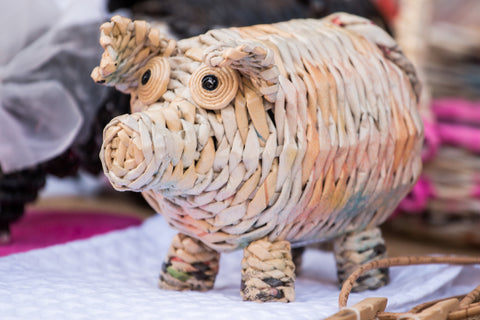
Photo by membio on depositphotos
Make paper mache with newspapers by shredding and pulping them to make countless home utility items.
If you are in no mood for a lot of work, use newspapers to line shelves and pet cages. Design a newspaper planter or many other such quirky projects.
5. Egg Crate Organizers:
Organizing small items has always been a big hassle. They always seem to vanish into thin air, no matter how careful we are.
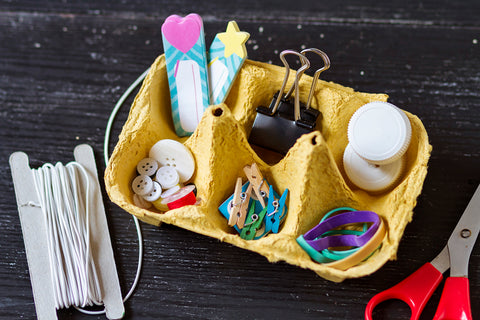
Photo by ondacaracola on depositphotos
Now with these super cute egg crate organizers, organizing is no biggie. Paint the egg crates in pretty colors and store your tiny articles safely in the dimples of the egg crates. No more frantic searching! Put them near your workstation where you can easily find them. Save your time and money with this zero-cost organization hack.
6. Scrap Fabric To Patchwork:
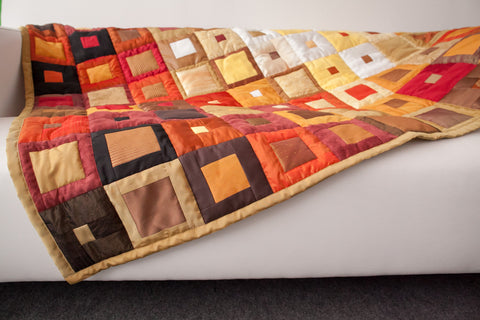
Photo by melnikofd@yandex.ru on depositphotos
Old clothes can transform into beautiful creations of cloth art that decorate your rooms with glorious color combos.
Use patchwork to stitch cushion covers, pillow covers, quilts, bags, oven mitts, table cloth, curtains, aprons, and so on.
But remember, mastering the art of patchwork is a must before you can indulge in an adventure with it. Else, it can make you miserable.
Cut fabric of different shapes and colors (squares, triangles, hexagons, or strips) and sew them together to make a larger fabric that is vibrant and multicolored.
Use a sewing machine to make your patchwork project a tad bit easier. But if you don’t own one, you can also try stitching it by hand.
Choose colors adjacent to each other in the color wheel to make your patchwork look natural and mellow.
Pro-Tip: As a beginner, it is wise to hand stitch with a running stitch before using the sewing machine, so you can easily remove the stitches if something goes wrong.
7. Wine Cork ArtWork:
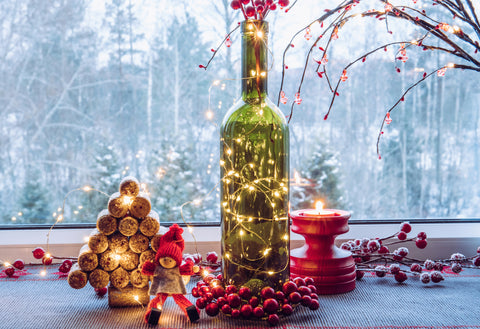
Photo by FotoHelin on depositphotos
Put your wine cork collection to good use by converting them into this beautiful festive decor and adding a lighting element to make it glow. This Christmas tree is one of a kind and is a perfect festive decor for any wine lover.
Not just the Christmas tree – reuse the wine corks to make door mats, table tops, photo frames, pendants, door mats, magnetic succulent planters, key hangers, and a multitude of other decorative home decor items.
8. Plastic Bottle Reuse:
It would not be fair if I didn’t include plastic bottles in this list. And it’s no secret how easily we can reuse plastic bottles to make various household utility items and decorative pieces.

Photo by Kris.Rad on depositphotos
Convert your neighborhood into a nature-friendly bird sanctuary.
Make this simple bird feeder using a plastic bottle. Fill it with seeds and hang it higher at a spot that steers clear from its predators. You can also make a bird bath from a plastic bottle so birds can fetch a drink for themselves and enjoy an occasional replenishing bath during the summer.
Plastic bottles can be a treasure with which you can make plenty of household items like vases, planters, drip irrigation systems, light bulbs, organizers, egg yolk separators, and many more.
9. Sock Makeover:
How often have we wondered what to do with a sock that has lost its pair? The solution is to upcycle them into functional items.
Gather your sock collection and get to work. Cut the bottom part of the sock and slide it into the bottle or the cup. Now cut the extra bit of the sock at the bottom and stitch the bottom. Your thermos case is ready to use.
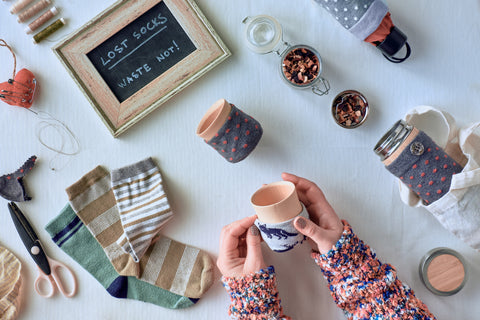
Photo by anyaivanova on depositphotos
Fashion such easy cup warmers and keep your drinks warm and your mugs cozy during winter. Stitch some buttons on them to decorate.
Don’t just stop there! Use the rest of your sock collection to make snowmen, dolls, purses, scrunchies, ice bags, organizers, and arm/hand warmers. Utilize them to pack fragile glassware.
10. Repurpose Cardboard:
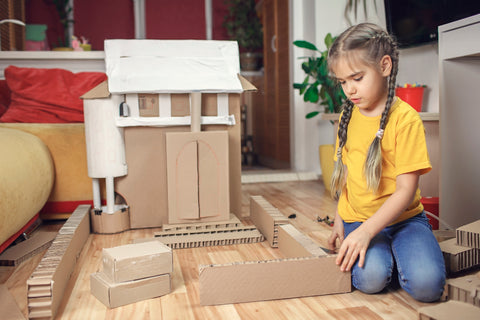
Photo by maria.symchych on depositphotos
Cardboard boxes are plenty in any household. This is another no-cost craft supply item for your crafty endeavors with which you can build almost anything.
Holiday time for kids at home is boring. Instead of buying them new toys or enrolling them in workshops, encourage them to build toys using the readily available cardboard boxes at home.
Working with their hands and planning and designing their toys will improve their hand-to-eye coordination and greatly enhance their creative and problem-solving skills. Completing their project will make them happy and will boost their self-confidence.
Other popular cardboard reuse options include household organizers, storage boxes, photo frames, stylish decorations, handmade cards, bookcases, etc.
Convert shoeboxes, cereal boxes, and all packaging boxes into utility items and eco-friendly storage options around your house.
11. Denim Recreation:
Denim clothing is durable, but when you grow tired of wearing them (or have outgrown them) or if it wears out too much that you can’t donate and only discard them, transform them.
If you have the time and interest, remake your old favorite jeans into chic bags, baskets, tote bags, organizers, cushion covers, pillow covers, brooches, or even braided rugs. Be innovative, and your old denim jeans or jacket will find purposeful reuse that can find a perfect spot in your house.
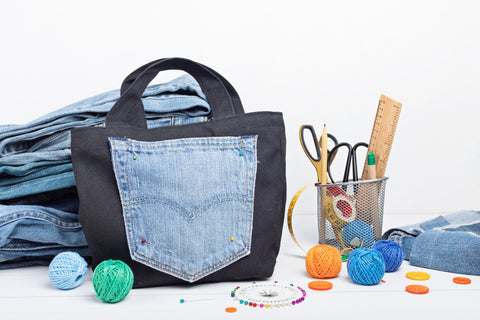
Photo by Netrun78 on depositphotos
12. Rehash Mason Jars:
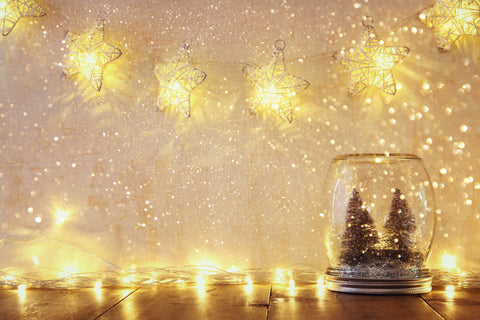
Photo by tomert on depositphotos
Adorn your room with this beautiful snow globe Christmas tree and add a backdrop of illumination streaming from star-string lights. What a lovely sight!
To do this holiday DIY project, you will need a mason jar with a lid, a miniature artificial Christmas tree, glue, snow glitter, glycerin, and water.
Open the mason jar and glue the Christmas tree onto the inside of the lid. Fill the mason jar with snow glitter. Pour in water and add glycerin at a 3:1 ratio. Put the top back on the bottle. Shake well. Exhibit your snow globe along with other Christmas decorations.
There are numerous other ways to reuse your mason jars. Some kitchen uses include kitchen pantry item storage, kitchen tool holder, cutlery holder, etc.
Create a mini herb garden by planting a few herbs in the mason jars and label them creatively using a chalkboard, etching, or just putting on labels. Showcase them on floating shelves for a trendy appeal.
Add trimmings, laces, paint, etching, jute rope, macrame thread, or decoupage to create decorative items like vases, serial light holders, votive candle holders, pendant lights, and many other ornamental craft ideas.
They also come in handy in spaces where you need a lot of organization – stationery items, ornaments, sewing supplies, hardware organization, etc.
1. Why Is It Important To Recycle Materials Into Reusable Crafts?
When we upcycle dump-it-right-into-the-bin items into useful items, it helps take the pollution burden off the earth. Though we may not see immediate change, we can slow down the degradation of the earth to a certain extent.
Doing is silent speaking. The future generation gets to learn to navigate by our example and understand better about reducing their carbon footprint. It can be such a thoughtful effort towards the ONE planet we have at our disposal.
Recycling, reducing, and reusing is the greatest goal we need to work towards. Creative reuse of waste products will make an ocean of difference, whether you are helping your child do a school project or just want to stretch your artistic muscles and create something to adorn your home.
2. What Are Tips For Creating Home Decor Items From Waste?
- Though we are using waste materials to create something worthy, it is important not to make the mistake of combining decomposable and nondecomposable parts. Because when the time comes to dispose of the merged product, it will become a problem to recycle them.
- The first step to upcycling is gathering and categorizing waste materials like glass bottles, newspapers, old fabric, cardboard, and other such collections.
- Think out-of-the-box to create with the source of materials you have at hand. Take inspiration from online platforms, blog pages, and books to see your best possibilities.
- If you are planning to do carpentry or other such tasks which require precaution, wear protective gear like safety eyeglasses, hand gloves, and appropriate shoes, especially when handling sharp things and using toxic substances. Also, ensure you have the necessary tools and other requirements to complete the work.
- Prep for the project by washing the raw (waste) material – plastic bottles, glass bottles, etc. Sand items like reclaimed wood, old wooden items, etc.
- Devise a clear-cut plan before starting the project and visualize how the end product will turn out. Preplanning will ensure that you proceed in the right direction.
- Start working on your project at hand. Ensure you make unique craftwork by adding a personal touch to it.
- If you are a beginner, don’t let failure and imperfections demotivate you but learn from your mistakes and try to avoid making similar errors in your next project. Make every effort an opportunity to learn and have fun exploring.
- Choose eco-friendly options for glues and final coats, thus doubling up on your contribution to the environment.
- Share the pictures of your finished product in your social circle and inspire others to repurpose and reduce the potential waste they produce.
Happy upcycling!

